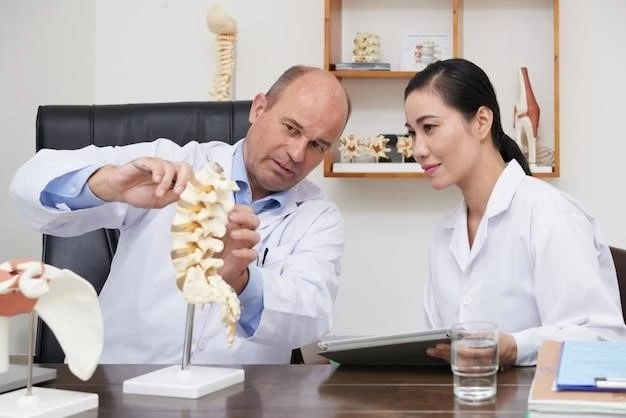Bone Development Disorders
VI. Impact of Genetics on Bone Development Disorders
VII. Lifestyle Factors Affecting Bone Health
VIII. Research Advances in Bone Development Disorders
I. Introduction to Bone Development Disorders
Bone development disorders encompass a range of conditions that affect the growth and formation of bones. These disorders can arise from various factors, including genetic predispositions, nutritional deficiencies, and hormonal imbalances. Understanding the causes, symptoms, and treatment options for bone development disorders is crucial for effective management and prevention. This article provides a comprehensive overview of the complexities surrounding bone health and development, shedding light on the impact of genetics, lifestyle factors, and advancements in research on bone disorders.
II. Causes of Bone Development Disorders
The causes of bone development disorders are multifactorial and may include genetic factors, nutritional deficiencies, and hormonal imbalances. Genetic predispositions can lead to conditions such as osteogenesis imperfecta, while inadequate intake of nutrients like calcium and vitamin D can impair bone growth. Hormonal imbalances, such as in thyroid or growth hormone levels, can also impact bone development. Understanding these underlying causes is essential for accurate diagnosis and targeted treatment of bone disorders. Addressing these factors early on can help prevent complications and promote optimal bone health.
Genetic Factors
Genetic factors play a significant role in the development of bone disorders. Variations in genes responsible for bone formation and mineralization can lead to conditions such as osteogenesis imperfecta, achondroplasia, and osteopetrosis. These genetic abnormalities can impact the structure, strength, and growth of bones, resulting in skeletal deformities and increased fracture risk. Understanding the genetic basis of bone disorders is crucial for accurate diagnosis and personalized treatment strategies tailored to individual patients. Ongoing research in genetics continues to uncover new insights into the complex interplay between genetic factors and bone health.
Nutritional Deficiencies
Nutritional deficiencies can have a profound impact on bone development, as essential nutrients like calcium, vitamin D, and phosphorus are vital for bone health. Inadequate intake of these nutrients can lead to conditions such as rickets in children and osteomalacia in adults, characterized by weakened and brittle bones. Poor dietary habits, malabsorption issues, and certain medical conditions can contribute to nutritional deficiencies affecting bone formation and density. Addressing and correcting these deficiencies through dietary modifications, supplementation, and medical intervention are essential for promoting optimal bone health and preventing bone development disorders.
Hormonal Imbalances
Hormonal imbalances can significantly impact bone development, as hormones like estrogen, testosterone, thyroid hormones, and growth hormone play crucial roles in bone growth and maintenance. Conditions such as hyperthyroidism, hypothyroidism, and hormonal disturbances during puberty can disrupt the intricate balance of bone remodeling processes, leading to decreased bone density and increased fracture risk. Managing hormonal imbalances through medication, hormone replacement therapy, or other medical interventions is essential for preserving bone health and preventing the development of bone disorders associated with hormonal dysregulation.
III. Symptoms and Diagnosis of Bone Development Disorders
Recognizing the symptoms of bone development disorders is crucial for timely diagnosis and intervention. Common symptoms include bone pain, fractures with minimal trauma, skeletal deformities, and delayed growth. Diagnostic procedures such as X-rays, bone scans, blood tests, and genetic testing can help identify underlying issues. Early detection and accurate diagnosis of bone disorders are essential for implementing appropriate treatment strategies to mitigate complications and improve quality of life for individuals affected by these conditions.
Common Symptoms
Common symptoms of bone development disorders include bone pain, fractures with minimal trauma, skeletal deformities, and delayed growth. Individuals may also experience reduced strength, mobility, and an increased risk of fractures due to weakened bones. Recognizing these symptoms is critical for early intervention and treatment. Seeking prompt medical evaluation upon experiencing any of these signs can facilitate timely diagnosis and management of bone disorders, enhancing the overall prognosis and quality of life for affected individuals.
Diagnostic Procedures
Diagnostic procedures for bone development disorders encompass a range of imaging and laboratory tests to assess bone health. X-rays, bone scans, and magnetic resonance imaging (MRI) can provide insights into bone structure and integrity. Blood tests measuring calcium, phosphorus, and vitamin D levels help evaluate bone metabolism. Genetic testing can identify hereditary bone disorders. These diagnostic tools aid healthcare professionals in determining the underlying cause of bone disorders and formulating personalized treatment plans tailored to the individual’s specific condition.
IV. Treatment Options for Bone Development Disorders
Treatment options for bone development disorders include medications to improve bone density, physical therapy to enhance strength and mobility, and surgical interventions to correct skeletal deformities or fractures. Medications such as bisphosphonates, calcitonin, and vitamin supplements help promote bone health. Physical therapy programs focus on exercises to strengthen bones and improve coordination. Surgical procedures like osteotomy or bone grafting may be necessary for severe cases. A multidisciplinary approach tailored to the specific disorder is essential for optimal management and improved outcomes in individuals with bone development disorders.
Medications
Medications play a vital role in the treatment of bone development disorders, aiming to improve bone density and strength. Common medications include bisphosphonates, calcitonin, and vitamin D supplements. Bisphosphonates help inhibit bone resorption, while calcitonin assists in regulating calcium levels. Vitamin D is essential for calcium absorption and bone mineralization. These medications are prescribed based on the underlying cause of the disorder and individual patient needs. Adherence to medication regimens, under medical supervision, is crucial for effectively managing bone development disorders and promoting overall bone health.
Physical Therapy
Physical therapy is a key component in the treatment of bone development disorders, focusing on exercises to improve bone strength, flexibility, and mobility. Therapeutic techniques help individuals enhance their bone health, muscle function, and overall physical well-being. Physical therapists customize exercise programs to suit the specific needs and abilities of patients, addressing limitations and optimizing bone growth. Regular physical therapy sessions, combined with other treatment modalities, contribute to better bone health outcomes and quality of life for individuals with bone development disorders.
Surgical Interventions
Surgical interventions play a crucial role in the management of severe bone development disorders, addressing skeletal deformities, fractures, or structural abnormalities. Procedures such as osteotomy, bone grafting, or internal fixation aim to correct bone alignment, improve stability, and enhance function. Surgical interventions are tailored to each patient’s specific condition and may involve extensive preoperative assessments and postoperative care. Collaborating with a skilled surgical team and following rehabilitation protocols post-surgery are essential for successful outcomes in individuals with complex bone development disorders.
V. Prevention Strategies for Bone Development Disorders
Prevention strategies for bone development disorders focus on promoting optimal bone health through adequate nutrition, regular exercise, and fall prevention measures. Ensuring a balanced diet rich in calcium, vitamin D, and other essential nutrients supports bone growth and strength. Engaging in weight-bearing exercises, such as walking or strength training, helps maintain bone density and reduce fracture risk. Implementing safety precautions to prevent falls, particularly in older adults, can minimize the likelihood of bone injuries. By incorporating these preventive measures into daily routines, individuals can safeguard their bone health and reduce the incidence of bone development disorders.
Adequate Nutrition
Adequate nutrition plays a fundamental role in preventing bone development disorders, with essential nutrients like calcium, vitamin D, and phosphorus being key for optimal bone health. Consuming a balanced diet rich in dairy products, leafy greens, fish, and fortified foods can support bone growth and density. Ensuring sufficient intake of vitamin K, magnesium, and other micronutrients also contributes to bone strength. By prioritizing a nutrient-dense diet and meeting daily requirements for vital bone-building nutrients, individuals can reduce the risk of bone disorders and maintain overall skeletal health.

Regular Exercise
Regular exercise is indispensable in preventing bone development disorders, as weight-bearing and muscle-strengthening activities contribute to bone density and integrity. Engaging in activities like walking, jogging, dancing, or weightlifting stimulates bone remodeling and growth. Exercise also enhances balance, coordination, and overall physical fitness, reducing the risk of falls and fractures. By incorporating regular physical activity into daily routines, individuals can fortify their bones, maintain optimal musculoskeletal health, and mitigate the onset of bone-related conditions, promoting long-term well-being.
Fall Prevention
Fall prevention strategies are pivotal in averting bone development disorders, particularly in older adults prone to fractures. Measures such as maintaining a clutter-free environment, ensuring adequate lighting, and using assistive devices can reduce fall risks. Exercise programs focusing on balance and strength training also play a crucial role in preventing falls. Regular eye check-ups, footwear assessments, and home modifications further enhance safety. By implementing comprehensive fall prevention initiatives, individuals can safeguard their bone health, minimize injury risks, and maintain independence in daily activities.
IX. Management of Bone Development Disorders in Children
Management of bone development disorders in children necessitates a comprehensive approach encompassing early diagnosis, appropriate treatment, and multidisciplinary care. Tailored interventions such as growth hormone therapy, physical therapy, and orthopedic interventions help address specific bone disorders in pediatric patients. Nutritional support, genetic counseling, and regular monitoring are also integral components of managing bone health in children. Collaborating with pediatric specialists, endocrinologists, and orthopedic surgeons ensures optimal care and outcomes for children with bone development disorders, promoting healthy growth and development.
